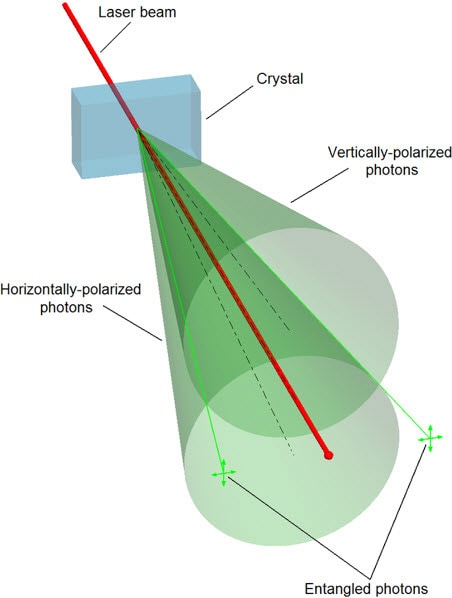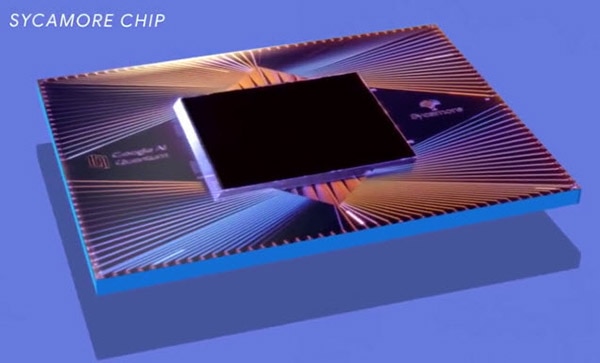Quantum Computing
2024-09-23 | By Antonio Velasco
In today’s world of machine learning and ever-advancing technology, where computational power is everything, we’re forever looking to continue to push the boundaries of what’s possible. Computing has been a relatively recent phenomenon, with the first electronic computer coming out not even a century ago (1943). A term that has plastered news articles and business reports alike has recently been hailed as the next best thing and can possibly help us to further computing power to heights we can’t even imagine. In this blog, we’ll talk about Quantum Computing.
What Does It Mean to Compute?
To understand what quantum computing is, we might first understand how the everyday digital computer works. To put it simply, computers receive data, process it, and output it in a form that we can read. There are a great deal of parts that go into a computer, but we’ll be focusing on the Central Processing Unit (CPU) for this blog.

CPUs in traditional computers are electronic chips that allow the device to execute calculations, instructions, and more. These chips utilize microelectronic circuitry, often transistors, to process data at the gate level. Extremely low currents are passed through this circuitry and are processed at a very high speed. In order for this to happen, this current is simplified to whether or not it is present. Simply, it boils down to where it is off (0), or on (1), allowing these calculations to be made at an extremely fast pace. These digits are referred to as “bits,” and are the input and output for these CPUs.
How is Quantum Computing Different?
Quantum Computers differ as they utilize quantum bits, or qubits, as opposed to the normal bit. Qubits differ as they hinge on the quantum property of superposition. Superposition refers to the idea that a piece of information could exist at multiple levels at one time. For regular bits, it can be represented as a 0 or 1 (digital). In quantum bits, they can either be 0, 1, or a superposition of 0 and 1, with a specific probability of being either. This ability to exist in multiple states allows qubits to store a lot more information than a normal bit, as it can represent a lot more values.

The above picture depicts a qubit's two quantum states, which can also be expressed as a probability of being at either state.
Furthermore, qubits can also utilize the property of quantum entanglement: where qubits can be grouped and correlated amongst each other. This allows multiple qubits to be manipulated at once and allows for a great deal of combinations and possibilities in processing power.

How is Quantum Computing Done?
The principle of Quantum Computing, while sounding simple, is far from it in terms of implementation. It is much easier to just have ONs and OFFs, but to exhibit quantum properties, designers must utilize such phenomena.
Common implementations often utilize a single atom to achieve these properties. One example is the manipulation of an ion or neutral atom’s energy state. These atomic particles can have their states changed by the introduction of energy fields or even lasers.
The harder part is creating a chip that not only can process this information but also do it much faster than traditional computing. These principles can be very tricky to work with, and creating an efficient computer that is compatible with it takes a great deal of time, money, and research. Most quantum computers today don’t even utilize more than 100 qubits and need much more to perform meaningful tasks.
The Benefits of Quantum Computing
While arduous to develop and utilize, the benefits are tremendous. Their computing power has the potential to be extremely powerful and fast. For example, Google’s Sycamore quantum computer moves at paces that the most powerful supercomputer today can’t fathom. The Sycamore performs computations in just a few seconds that Frontier, the most advanced supercomputer, would take 47 years to do.

The issue comes with scaling, and while it performs operations at a much faster speed, there are still numerous issues concerning reliability, cost, and more. Getting quantum computers to the point where they can spew out useful data at a more efficient rate than current supercomputers will take a long time, but the potential is certainly there.
Conclusion
As quantum computers continue to be developed, there is no doubt that it is the future of computing. They can allow us to achieve technological heights previously not thought possible, and although relatively new, have advanced tremendously in the short time they’ve been around. It is thought that we’ll start to see them become useful and marketable in 2040, and who knows what will happen in 2050. Just think about the technological jump we’ve made since 2004. There’s a lot that can happen in just 20 years.
Have questions or comments? Continue the conversation on TechForum, DigiKey's online community and technical resource.
















